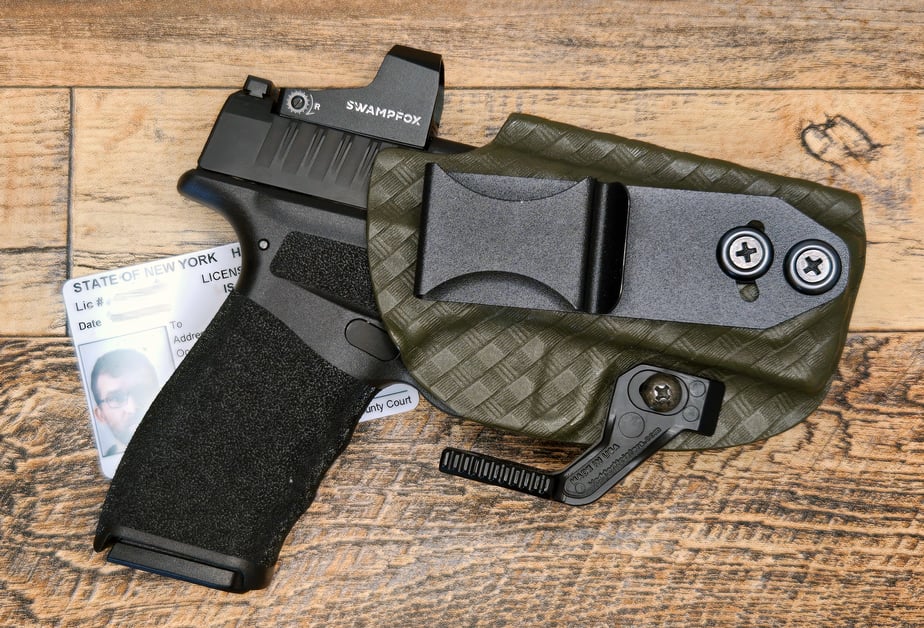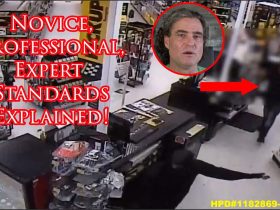This article delves into the essential habits, mindsets, and considerations every responsible concealed carrier should develop. It covers common mistakes, situational awareness tips, the potential benefits of insurance, and key psychological strategies for staying prepared.
Carrying a firearm for personal protection requires careful planning, rigorous training, and a disciplined mindset. While the freedom to carry concealed comes with significant responsibility, being informed about potential challenges and best practices can make the experience safer and more effective. This article explores crucial aspects every concealed carrier should understand, from avoiding common mistakes to enhancing situational awareness, and even considering whether concealed carry insurance is the right choice.
By staying aware and prepared, you’ll be better positioned to protect yourself, your loved ones, and the people around you without taking unnecessary risks.
1. Avoiding Common Concealed Carry Mistakes
One of the most critical aspects of concealed carry is understanding the mistakes that could compromise your safety or even lead to legal consequences. Some frequent errors include improper holster selection, failing to practice drawing your firearm, and neglecting ongoing training.
Holster Selection: Choosing the right holster is fundamental to both comfort and accessibility. Not all holsters are equal; some are better suited for specific body types, clothing, or carry methods. For instance, appendix carry is popular for quick access but may not be comfortable or feasible for everyone. Additionally, a holster that covers the trigger guard is essential to avoid negligent discharges.
Failing to Practice Drawing: Many concealed carriers underestimate the importance of practicing their draw. In an emergency, hesitation or a slow draw can be costly. Practicing drawing from different positions (seated, standing, or crouched) and in various scenarios (such as wearing winter clothing) can improve your response time and build confidence.
Skipping Regular Training: Carrying a firearm isn’t just about buying it and leaving it holstered. Ongoing practice at the range and scenario-based training, such as drills focused on drawing and shooting under stress, are crucial to developing a responsible carry routine. Training helps you maintain muscle memory and provides insight into your reactions during high-stress situations.
Read Even More about Common Concealed Carry Mistakes
2. Developing Situational Awareness

Situational awareness is a core skill for anyone who carries concealed. It involves staying alert to your surroundings, being aware of potential threats, and understanding how to assess situations quickly. Developing this awareness is essential to ensure you can recognize danger early enough to act responsibly.
Practicing Mindful Observation: Simple exercises can help develop situational awareness. For example, when entering a new environment, take a moment to observe exits, people, and objects that could potentially obstruct your escape route. This practice helps you feel more in control and capable of responding effectively.
Observing Behavior Cues: Analyzing people’s behavior, such as unusual body language or signs of distress, can provide early warning signs of potential trouble. For instance, noticing someone fidgeting or looking overly anxious can give you time to distance yourself from a potentially dangerous situation before it escalates.
Avoiding Distractions: Smartphones, headphones, or anything that divides your attention can severely impair situational awareness. A person who is distracted is less likely to notice a potential threat or have the reaction time needed to respond. Whenever possible, keep one earbud out and reduce phone use, especially in high-traffic areas or locations where you feel vulnerable.
Learn all about Situational Awareness
3. Considering Concealed Carry Insurance
One of the less-discussed aspects of responsible concealed carry is insurance. Many carriers overlook the legal ramifications of a self-defense incident, but a defensive shooting could lead to court costs, attorney fees, or even civil suits. Concealed carry insurance provides financial protection in case you face legal challenges after a self-defense encounter.
Understanding What Insurance Covers: Concealed carry insurance generally covers legal fees and attorney costs. Some policies also offer bail bond coverage, which can be beneficial if you’re detained following a defensive incident. Understanding the specifics of coverage—such as whether a policy includes only criminal defense or also civil liability—is crucial.
Evaluating Coverage Options: With various options available, carriers should review what different policies offer. Some insurance providers offer 24/7 access to an attorney, while others may have caps on coverage amounts. Comparing policies and selecting one that meets your needs will provide greater peace of mind.
Is Insurance Right for You? For those concerned about legal ramifications, it’s a worthy consideration. Many carriers feel that the relatively low monthly cost is a reasonable trade-off for the security of knowing they’re legally protected.
See a Comparison of the Top Concealed Carry Insurance Plans

4. Cultivating the Concealed Carry Mindset
Carrying concealed requires a shift in mindset. Balancing preparation with a non-aggressive approach can ensure you’re ready for potential threats without feeling constantly on edge. This mindset keeps you calm, confident, and focused, making you a more responsible carrier.
Avoiding Overconfidence: Concealed carry is empowering, but overconfidence can be dangerous. It’s essential to remember that carrying a firearm doesn’t make you invincible. Avoid putting yourself in risky situations simply because you’re armed. Instead, maintain a mindset of avoiding confrontation whenever possible and using your firearm only as a last resort.
Balancing Preparedness with Relaxation: It’s easy to become hyper-vigilant, but constant alertness can be exhausting. Find a balance that allows you to stay aware without feeling overwhelmed. Regular practice and situational awareness training can improve your confidence, reducing the need to feel overly vigilant.
Understanding Legal Responsibilities: With the right to carrying concealed comes the responsibility to know the law. Being unfamiliar with self-defense laws can lead to unintended legal issues. Familiarize yourself with local, state, and federal regulations so that you can carry legally and with the assurance that you understand your rights and obligations.
5. Safe Storage Practices

An often-overlooked component of responsible concealed carry is safe storage. Whether at home or on the go, having a reliable storage plan ensures your firearm is secure and inaccessible to unauthorized individuals. This is essential for both personal safety and the safety of those around you.
Home Storage Options: Investing in a gun safe or lockbox at home helps keep your firearm out of reach of children or visitors. For quick access, consider a biometric or keypad-entry safe that you can open quickly in an emergency but that secures your firearm when not in use.
Vehicle Storage: For those who need to store their firearm temporarily in a vehicle, a quality lockbox is essential. Avoid leaving a firearm unsecured in a glove compartment or center console, as these are among the first places thieves check. A mounted lockbox secured to the frame of your car provides additional security and ensures your firearm remains safe.
On-the-Go Storage: When traveling, select a portable lockbox that complies with local laws for firearm transportation. Some models are TSA-compliant, allowing you to travel with your firearm while ensuring it remains secure.
In sum, being a responsible concealed carrier extends beyond simply owning and carrying a firearm. It requires awareness, preparation, and a commitment to continuous improvement. Understanding common mistakes, developing situational awareness, considering the value of insurance, and nurturing the right mindset are key elements to responsible and effective concealed carry.
Safety Tip: Situational awareness is a cornerstone of safe concealed carry. Regularly practice observing your environment, understanding potential threats, and maintaining focus to respond quickly if a self-defense situation arises.
Read the full article here


















Leave a Reply